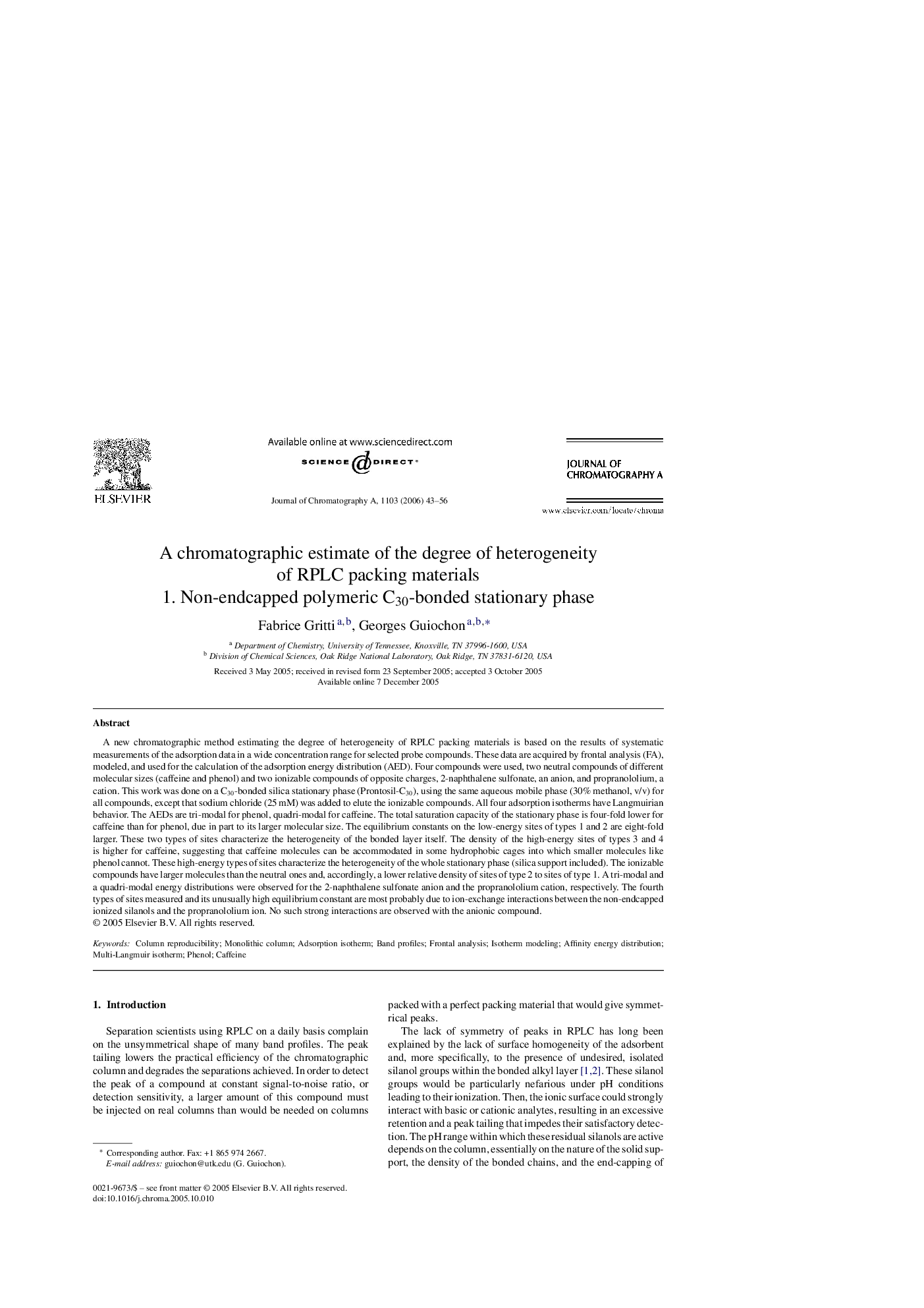| کد مقاله | کد نشریه | سال انتشار | مقاله انگلیسی | نسخه تمام متن |
|---|---|---|---|---|
| 1210445 | 965373 | 2006 | 14 صفحه PDF | دانلود رایگان |
عنوان انگلیسی مقاله ISI
A chromatographic estimate of the degree of heterogeneity of RPLC packing materials
دانلود مقاله + سفارش ترجمه
دانلود مقاله ISI انگلیسی
رایگان برای ایرانیان
کلمات کلیدی
موضوعات مرتبط
مهندسی و علوم پایه
شیمی
شیمی آنالیزی یا شیمی تجزیه
پیش نمایش صفحه اول مقاله

چکیده انگلیسی
A new chromatographic method estimating the degree of heterogeneity of RPLC packing materials is based on the results of systematic measurements of the adsorption data in a wide concentration range for selected probe compounds. These data are acquired by frontal analysis (FA), modeled, and used for the calculation of the adsorption energy distribution (AED). Four compounds were used, two neutral compounds of different molecular sizes (caffeine and phenol) and two ionizable compounds of opposite charges, 2-naphthalene sulfonate, an anion, and propranololium, a cation. This work was done on a C30-bonded silica stationary phase (Prontosil-C30), using the same aqueous mobile phase (30% methanol, v/v) for all compounds, except that sodium chloride (25Â mM) was added to elute the ionizable compounds. All four adsorption isotherms have Langmuirian behavior. The AEDs are tri-modal for phenol, quadri-modal for caffeine. The total saturation capacity of the stationary phase is four-fold lower for caffeine than for phenol, due in part to its larger molecular size. The equilibrium constants on the low-energy sites of types 1 and 2 are eight-fold larger. These two types of sites characterize the heterogeneity of the bonded layer itself. The density of the high-energy sites of types 3 and 4 is higher for caffeine, suggesting that caffeine molecules can be accommodated in some hydrophobic cages into which smaller molecules like phenol cannot. These high-energy types of sites characterize the heterogeneity of the whole stationary phase (silica support included). The ionizable compounds have larger molecules than the neutral ones and, accordingly, a lower relative density of sites of type 2 to sites of type 1. A tri-modal and a quadri-modal energy distributions were observed for the 2-naphthalene sulfonate anion and the propranololium cation, respectively. The fourth types of sites measured and its unusually high equilibrium constant are most probably due to ion-exchange interactions between the non-endcapped ionized silanols and the propranololium ion. No such strong interactions are observed with the anionic compound.
ناشر
Database: Elsevier - ScienceDirect (ساینس دایرکت)
Journal: Journal of Chromatography A - Volume 1103, Issue 1, 20 January 2006, Pages 43-56
Journal: Journal of Chromatography A - Volume 1103, Issue 1, 20 January 2006, Pages 43-56
نویسندگان
Fabrice Gritti, Georges Guiochon,